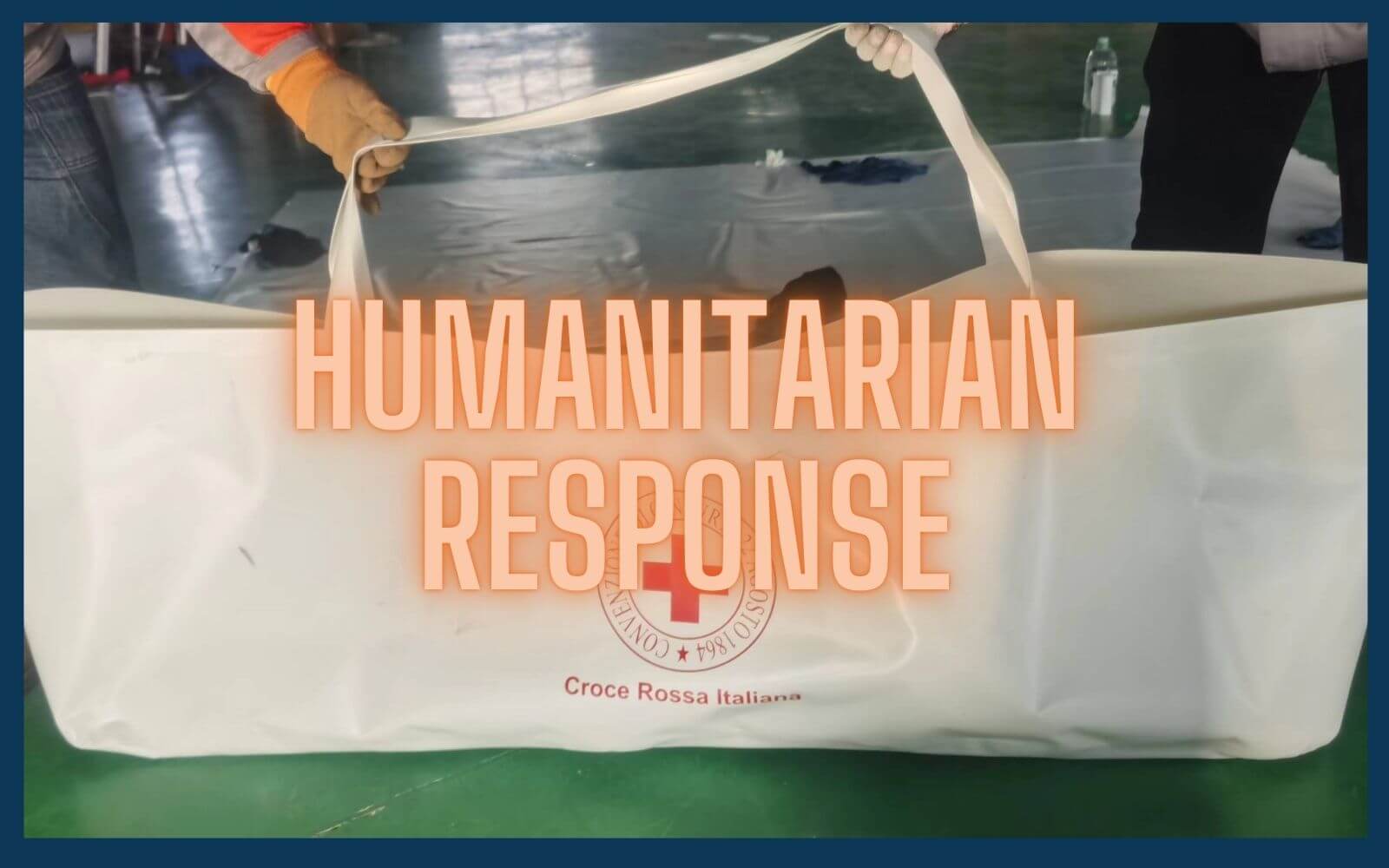HUMANITARIAN RESPONSE
Overview of Humanitarian Response
Humanitarian response involves providing aid and support to communities affected by crises, including natural disasters, conflicts, and other emergencies. The core of effective response is ensuring basic needs, with access to clean water is on the top list.
The Crucial Role of Water in Emergency Situations
Water is a lifeline in crisis scenarios, indispensable for survival, hygiene, and health. However, traditional methods of water storage face limitations in delivery and quick deployment when sites are in dire need.
Limitations of Conventional Water Storage Methods
Traditional storage tanks, such as rigid tanks and wooden/metal barrels, often difficult to meet the requirment of quick response at crisis sites.And most of traditional tanks can’t provide custom services, so they sometimes face limitation on sizes, especially on limited places.
Importance of Rapid and Flexible Solutions in Crisis Scenarios
In emergencies, time is live, clean water is also the source of live, so quick response on water supply is the primary problem should be solved in crisis. The ability to provide immediate and reliable clean water storage supply and wastewater treatment solutions can significantly impact the effectiveness of humanitarian response efforts.
Definition and Design Features
Water bladder tanks, also kown as pillow tanks, are flexible, foldable containers designed for the temporary storage of liquids, including water, fuel, chemical, etc. The flexible design allows for easy transportation, quick deployment, and efficient use in limited space.
Advantages in Humanitarian Contexts
The features of water bladder tanks make them suitable for humanitarian response.
Easy transportation:
Flexibility makes the tanks can fold and pack into a small carton and easy to transport. A 20GP container can load about 400pcs 1000L tanks, then loading a 20GP can solve 400tons water supply problem.
And a 1000L water bladder, the weight is only few kilograms, can easy to handle by 1 people and quickly transfer to remote places.
Easy installation:
How to install a water tank at site may need several steps, but installing a water bladder only 3 steps: unfold the bladder, filled, done. A flexible tank can be settled up within 3 mins. Bladder tanks worth the quickest response in emergency.
No limitation on space:
What the shape is the bladder tank depends on the place where the tank works at and the volume of the water filled.
We can deploy the water bladder at anyplace where won’t let the limited space effected. The flow of the water will reach every corners of the space and the flexible bladder keeps the water clean.
Working in extreme envirament:
Water bladder tanks can use in various working condition, including in extreme enviraments.
Using duable material and reinforced welding connection procedure make the tanks can bear strong strength from outside. And the mateiral used provide UV-resistance, bacterial-resistance, letting the tanks can use indoor&outdoor.
Working temperature from -40~90 celcus degree, working in extreme envirament is not challenge to bladders.
Sizes available:
Size ranges from 50L to 1,000,000L, regualr sizes from 500L to 100,000L, custom available.
As we look to the future, water bladder tanks promise to play a pivotal role in enhancing humanitarian response efforts. Their sustainable design, community engagement possibilities, and adaptability ensure that they remain essential components of effective water storage solutions during emergencies.








